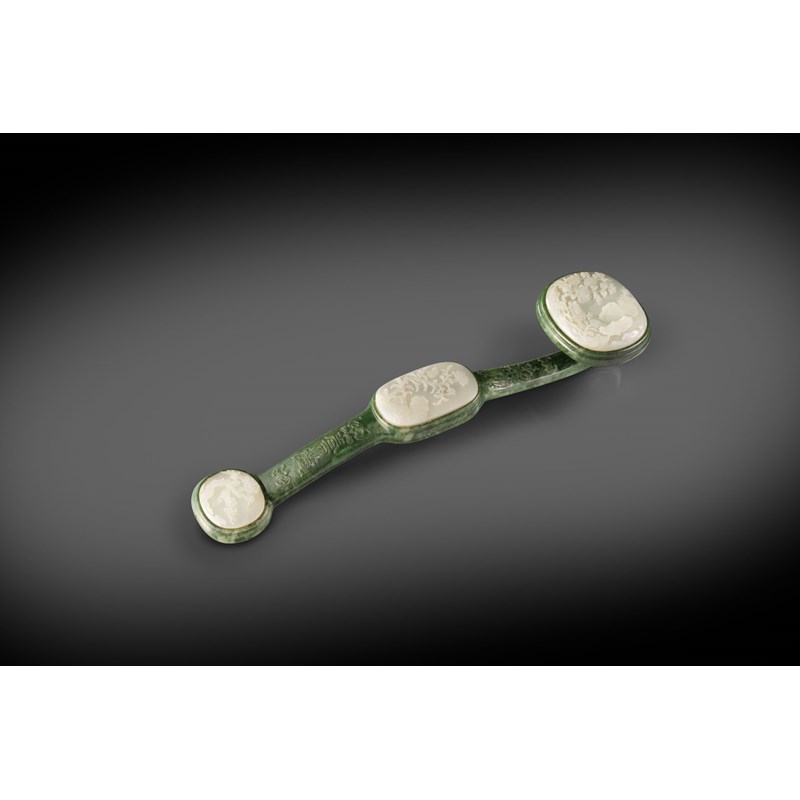The Lawrence Jade Collection - 14 Nov 2023
A CHINESE WHITE AND SPINACH-GREEN JADE RUYI SCEPTRE
A CHINESE WHITE AND SPINACH-GREEN JADE RUYI SCEPTRE
18TH CENTURY
The mottled dark green sceptre inset with three oval white jade plaques to the head, stem and terminal, the largest worked in relief with two butterflies fluttering above blossoming peony and aster in a mountainous landscape, the central panel carved with a flowering chrysanthemum branch growing amidst rockwork, the smallest plaque depicting a gnarled prunus tree, with twin-fish and a small bat surrounding a fylfot and qing to the upper section of the curved stem, the lower section of the shaft decorated with a pair of bats encircling a shou character and beribboned cash, the undecorated underside with a ribbed edge, 42.5cm.
Provenance: the Lawrence Collection of jades and hardstone carvings, purchased from Spink & Son prior to 1959.
Whilst ruyi sceptres hold great significance in Chinese culture, their exact origins are unknown. It is commonly believed that the form derives from that of a lingzhi fungus, but it has also been argued that the shape developed from that of a rod used by ancient diviners, or even from a constellation. The word ruyi literally translates to 'as you wish', and it conveys the meaning of good wishes and blessings. Ruyi sceptres were used as ritual objects in both Buddhism and Daoism. According to an early 20th century account by Stephen W Bushell (1844-1908), these treasured objects were placed on a table before the throne in every reception room of the Emperor's palace. Bushell also writes that ruyi sceptres were included amongst the Imperial gifts presented to dignitaries as a mark of special distinction.
Cf. The Complete Collection of Treasures of the Palace Museum, Jadeware (III), p.36, no.28 for a spinach-green jade sceptre inlaid with celadon plaques.
十八世紀 碧玉嵌白玉雕花卉紋如意
來源:勞倫斯珍藏玉石,1959年前購於Spink & Son。




 Live online bidding is available via our own
Live online bidding is available via our own